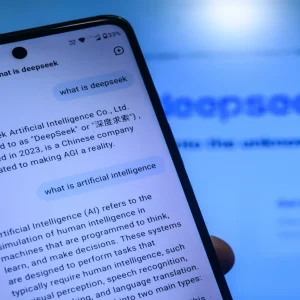
"The biggest challenge and role I have at Actian is looking out over the horizon and seeing how the landscape is changing," says Mike Hoskins, Actian’s CTO.
"I can assert categorically that the landscape is changing dramatically under our feet right now. I’ve been in software and data infrastructure for 35 years and I have never seen a time of such a massive and highly disruptive change as we’re going through right now."
This may seem like a sweeping statement to some, but what he and Actain’s CEO Steve Shine are professing makes sense.
Shine looks back on the past of data analytics as a simpler time: "In the past it was very simple and you had one hammer for everything, it was called a relational database and you solved everything by basically building applications on top of a relational database," he says
"But now we have seen that really start to change, and we see a common footprint in these new projects. They nearly all have Hadoop, some have NoSQL somewhere in their periphery and the challenges are fundamentally different."
Shine is very enthusiastic about embracing ‘Big Data 2.0’ as it opens up the use of analytics to smaller companies who would not have been able to afford to use them before.
He explains that the huge proliferation of new technology with many flavours of Hadoop, NoSQL there are many exciting new ways of integrating and analysing data.
"But no CIO gets rewarded for gluing that together," he warns. "The business says how fast can you help me to get at my customer churn data which is next to useless. They want to be able to constantly innovate that business process and analysis so that they stay ahead of their customers."
Using Big Data to your advantage
Actian breaks down its views of analytical outcomes into four key areas. The first, and arguably the most important is customer delight. The more you can know about that customer, the more you likely you will be able to retain that customer and then upsell them.
As well as knowing about the people you are catering for, you can also gain competitive advantage by knowing about your competition. The more you know about their strengths and weaknesses, the easier it is to respond and be proactive.
Risk can be much easier to mitigate when utilising the correct analytics. This is particularly integral to those businesses operating in the financial markets. If you are better at managing risk than your competitors, you are able to free up capital and put that to work in other areas.
Lastly, it is important to look at new and disruptive business models. If you are data centric, you can deliver insights that are more intrinsically valuable.
But how does this work in the scheme of the Internet of Things? Find out on the next page…
The software challenge
It is all very well deploying the analytics to make these changes, but the software to run these analytics is still in the development processes in some places.
"The challenges and the opportunities around big data and analytics are causing very tumultuous changes in software stacks and the software industry," says Hoskins.
"I think software is shockingly bad. I think some of the software we consider world class is Stone Age. It was written 30 years ago and it’s a travesty when you look at the waste of running that Stone Age software on very modern hardware."
Hoskins says he is concerned about the concept of the Internet of Things and the concept of instrumenting all objects to send data back to hubs to be logged.
"In some ways, something that is done with a log file is the universal artefact we will get used to. All of these machines and smart objects are going to be logging data in increasing granularity," he says.
"The question is: "ho is going to build the infrastructure to support this and collect that data at scale? Who is going to allow us to prepare and analyse that data and turn it into meaningful business action so we can get transformational business outcomes from that data?"
In Japan, Softbank have teamed up with Honda to create a connected car that emits analytics in real time so companies know exactly how the car is running: not just Honda, but also Bosch who made the motor. They have the potential to harness, capture and analyse this data at a scale never seen before. But until the software catches up, this remains a fantasy.
"The scale and complexity of this data that is streaming at them from the Internet of Things is going to break the back of the software industry," professes Hoskins.
"Software products that you think you know are going to fall over and die in the age of data. They can barely keep up with business transactions and now they have to deal with these machine observations and a scale and complexity they’ve never seen before. That’s the challenge for us."






